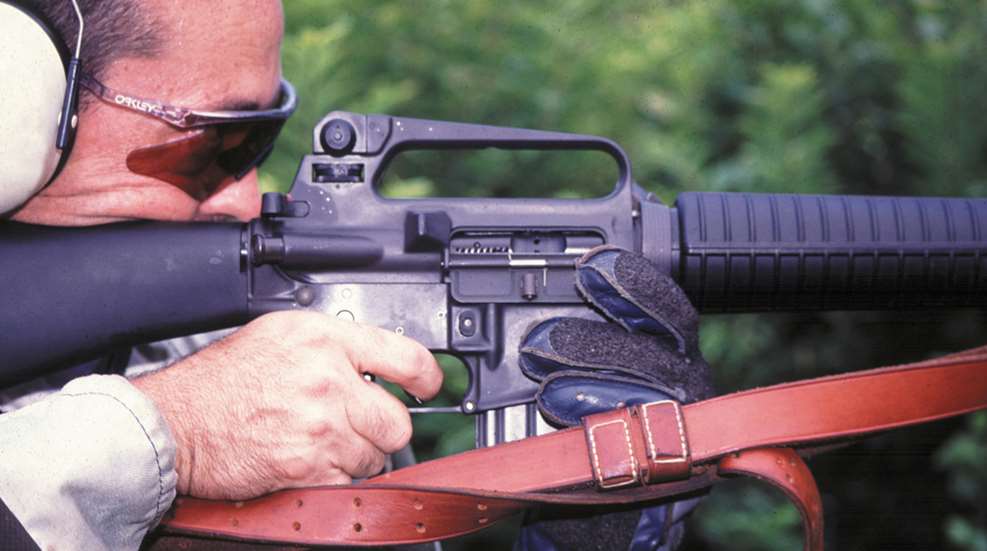
From the July 2001 issue of Shooting Sports USA.
AR-15 rifles are capable machines. Given the right combination of component quality, workmanship and ammunition—what I call "technical accuracy"—they are easily capable of cleaning a high power course.
However, when we're talking about service rifles, many other issues contribute to conspire against a clean target. Triggers, furniture, weight and other ergonomic or mechanical elements ultimately determine the shooter's capacity to realize the performance built into the rifle. I call that "mechanical accuracy," and it's the guidance system for the launching of bullets.
Sights are a big part of that system as they are what guides the shooter. Regardless of rifle type, what makes for good sights are precision and repeatability in movement, and adequate movement increments to locate the group on center. Of course, we have to be able to see them so we can put them where they need to be.
Rear Sight
The standard A2 rear sight is windage adjustable by a 32-pitch screw. That's equivalent to half-minute-of-angle (moa) graduations per click. There are 10 holes on the inside flat area of the windage knob and a spring-and-ball detent to secure each click stop. Problems with parts fit can be perplexing, and we'll talk about those later along with some ways to gain finer adjustments.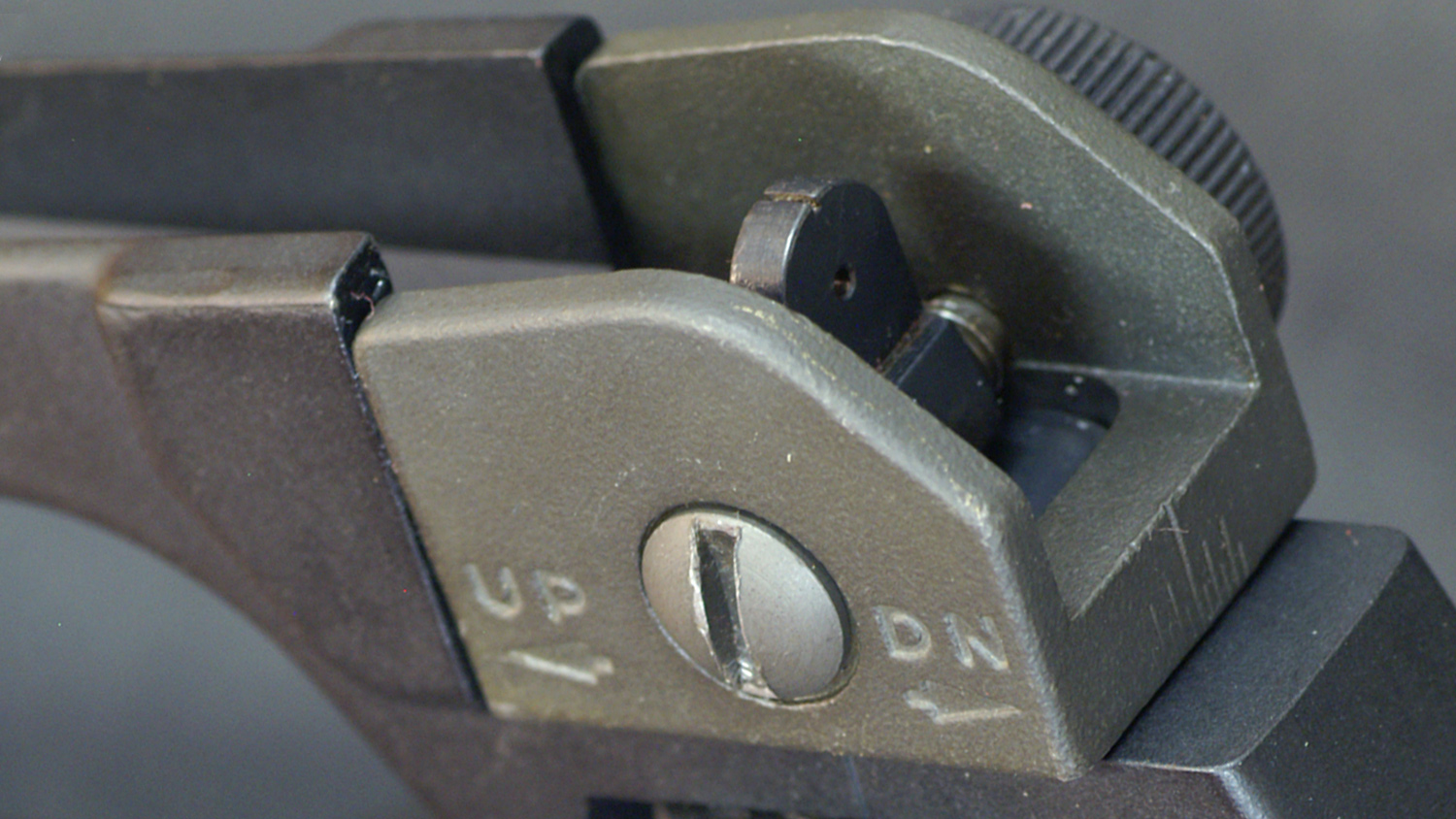
The issue elevation adjustment is done with a large threaded ring around a center post; stops are controlled by the same type of ball-and-spring detent. Standard issue click value is about 1½ moa. That is too coarse to locate a group within the confines of target center. Changing elevation value is done through parts replacement: and elevation post and wheel assembly with finer threads.
With this change, the sight doesn't move up and down as much with each click. Some sights may move in other directions, and that means a trip to the machine shop for repair. I spoke with John Holliger of White Oak Precision about his sight modifications. John is Distinguished and an NRA High Master, and has gained a reputation among the more serious AR-15 service rifle pilots as the "sight man." He has developed and applied a few tech tricks to AR-15 sights that no one else is doing. The most noticeable and notable modification is the addition of two pins down through the sight base and into the rifle receiver. These pins fix and locate the orientation of the base and support it equally against any unwanted movement.
Anyone who has fired an AR-15 has noticed that the sight base sits cockeyed. It's supposed to. There is a spring pushing against the left side of the base to index the base location. That is not a problem; it doesn't make the sight imprecise. The real problem is that if the windage screw fit is loose, it levers the screw against its hole in the base. The hard-coat anodizing will eventually wear, and the resultant tolerance increase causes backlash. Holliger's modification ultimately eliminates this spring as the dual pins fix the base against any possibility of twisting. Eliminating the spring reduces drag. Derrick Martin of Accuracy Speaks takes out the twist a little differently but effectively. His bases have a small weld tacked to their front sides. This bump is dressed down to a perfect fit on installation and takes up the gap that allows the twisting.
Front Sight
The front sight design on the AR-15 is both good and bad. It's good in that it's easily adjustable to get the elevation to a well-tuned zero. The front post threads into the sight base at 1.2 moa per stop. The bad part is that it's easily adjustable; threaded parts have play. The post can't change a click up or down on its own, but it can wiggle and reposition itself, and some are worse than others. The way to eliminate this potential is to thread the post hole clean through (they're usually drilled through but not threaded all the way), and spin up an 8-36 set screw from the bottom. Snug it against the bottom of the post after elevation zero is set and the front post will not move. Some use light-duty Loctite, but that's a little too permanent for my taste. If you ever want to shoot 1000 yards you'll have to move the sight to get enough elevation to reach the target.
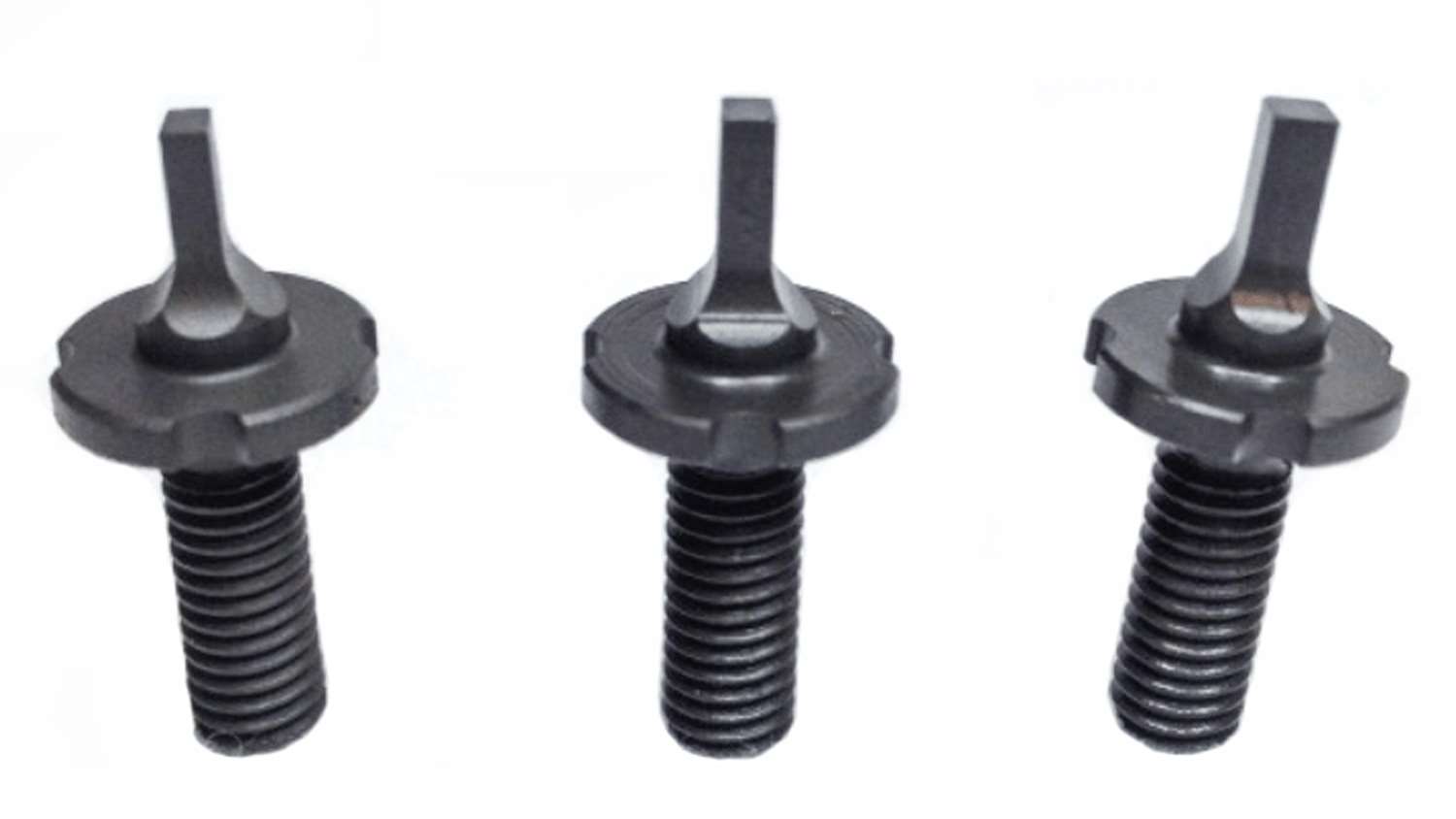
There are numerous posts produced by gunsmiths and industry manufacturers available in various widths. Better quality parts are precision ground or turned, depending if they're square or round. That's important, because locking screw or not, threaded posts can sit a little off plumb. Better quality posts are machined and threaded on centers.
The sight base or housing normally is press fit onto the barrel and secured by tapered cross pins. On a competition rifle, pins are not used due to adjustability and effect on accuracy. The common system is locking the base against movement using a set screw and a lot of glue. This takes stress off the barrel. It also allows windage adjustment of the front sight by rotating the sight housing and then fixing it down.
Back to Front
Aperture sizes and formats are widely optional over the standard hole drilled in a battle sight. The better setups feature interchangeable apertures, although it's not common among experienced shooters to change them with much abandon. Many military team shooters have a "bright sky" (smaller) and "dark sky" (larger) aperture. I'd venture that two apertures—one "just right" for clear days and one a step larger—should cover it well.
Accuracy Speaks has a nice arrangement: Derrick Martin makes a "flip" aperture with two such holes as described. Others use some variation of Albert Turner's original thread-in aperture plates. No matter what precision machining should mean, always get a zero for each aperture you own. They can be different.
The rear aperture size determines to the greatest extent the clarity of the image seen through the sight. As with photography, a smaller aperture extends depth of field by restricting light flow to fewer rays; that means less stray light enters the eye. As the aperture gets smaller, more is seen in focus. But it also gets darker, which causes its own strain. A better solution for shooters with less-than-perfect vision is forthcoming. More people have issues with this rifle due to its short sight-to-sight radius. Regardless, the point is to see the front sight in focus. Without that it's tough, if not impossible, to shoot well.
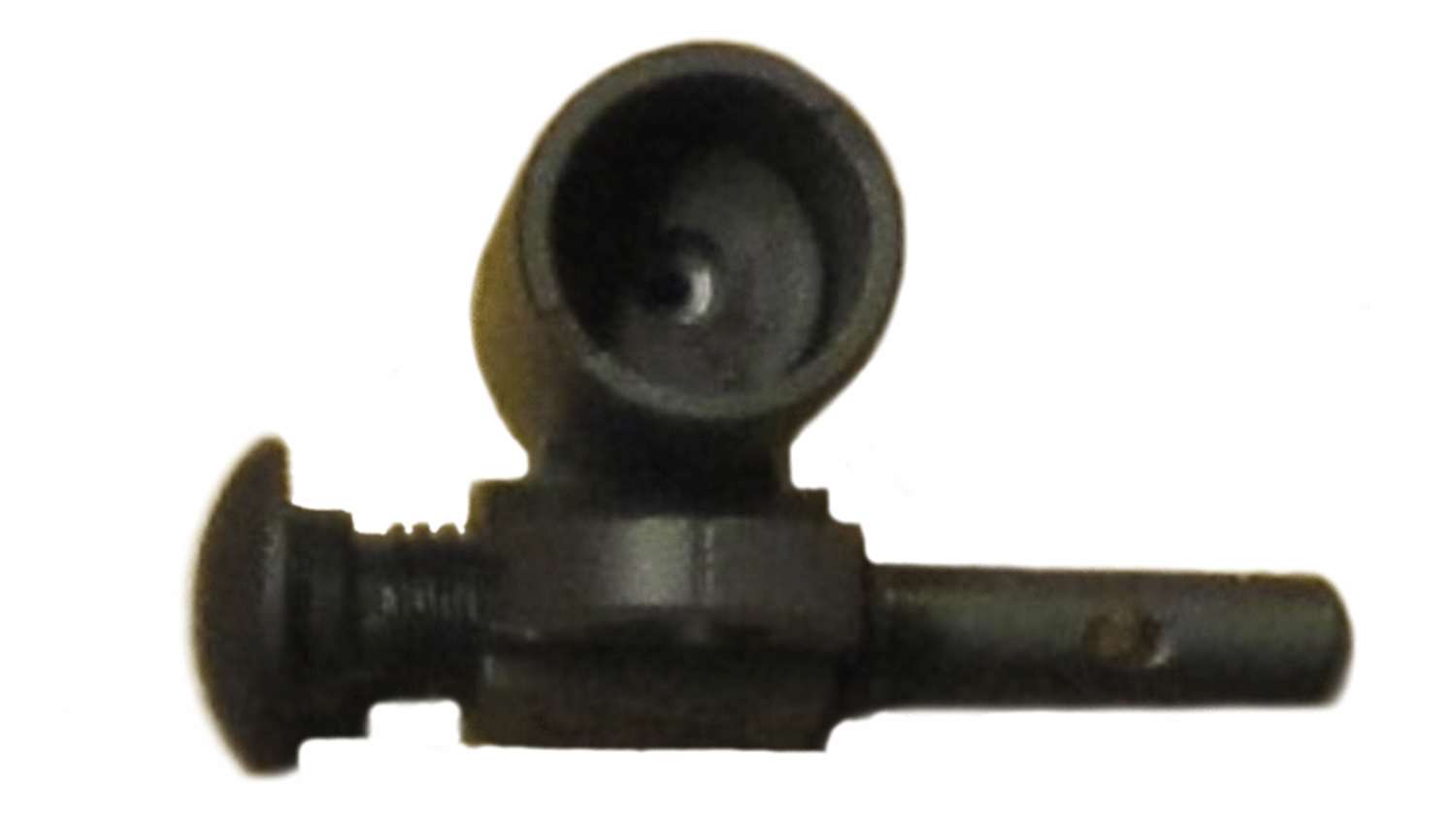
Hooded rear apertures, much like the ones M14 shooters know, are becoming increasingly popular. They help improve the sight picture by recessing the aperture from sunlight. They vary in length, width, detail and execution, and have some drawbacks.
The shooter is closer to the AR-15 sight, and some of the hoods effectively bring it even closer, meaning it may more easily hit the shooting glasses during recoil. As for sight quality, some shooters also move the aperture away from its position centered above the windage screw. The rotational play in the rear base doesn't disturb sights with an aperture that sits directly over the windage screw, but moving the aperture itself behind or in front of the original location complicates things. Since the spring pushes against the left side of the base, a hooded aperture can point left. Installing some hooded units on an unmodified sight can often move zero. The dual pin modification straightens the base and keeps the hood looking straight at the front sight, as does the Accuracy Speaks trick.
Front to Back
Post width is entirely a shooter's preference. Most shooters get one that is too narrow. Narrower posts appear finer, and the smaller point seems to exude precision. Put it on the target for a test, though. I shoot with a .065-inch post. Most shooters say it is wide, and it is.
The popular .052 is .010 less wide than the common National Match M14 sight width of .062-inch, and that's where I developed a preference for a wider sight. I shot a .075 on that rifle, took the .010-inch off for the AR-15 and ended up with a .065. I began shooting tighter groups with less eye strain. But I still don't like the looks of it.
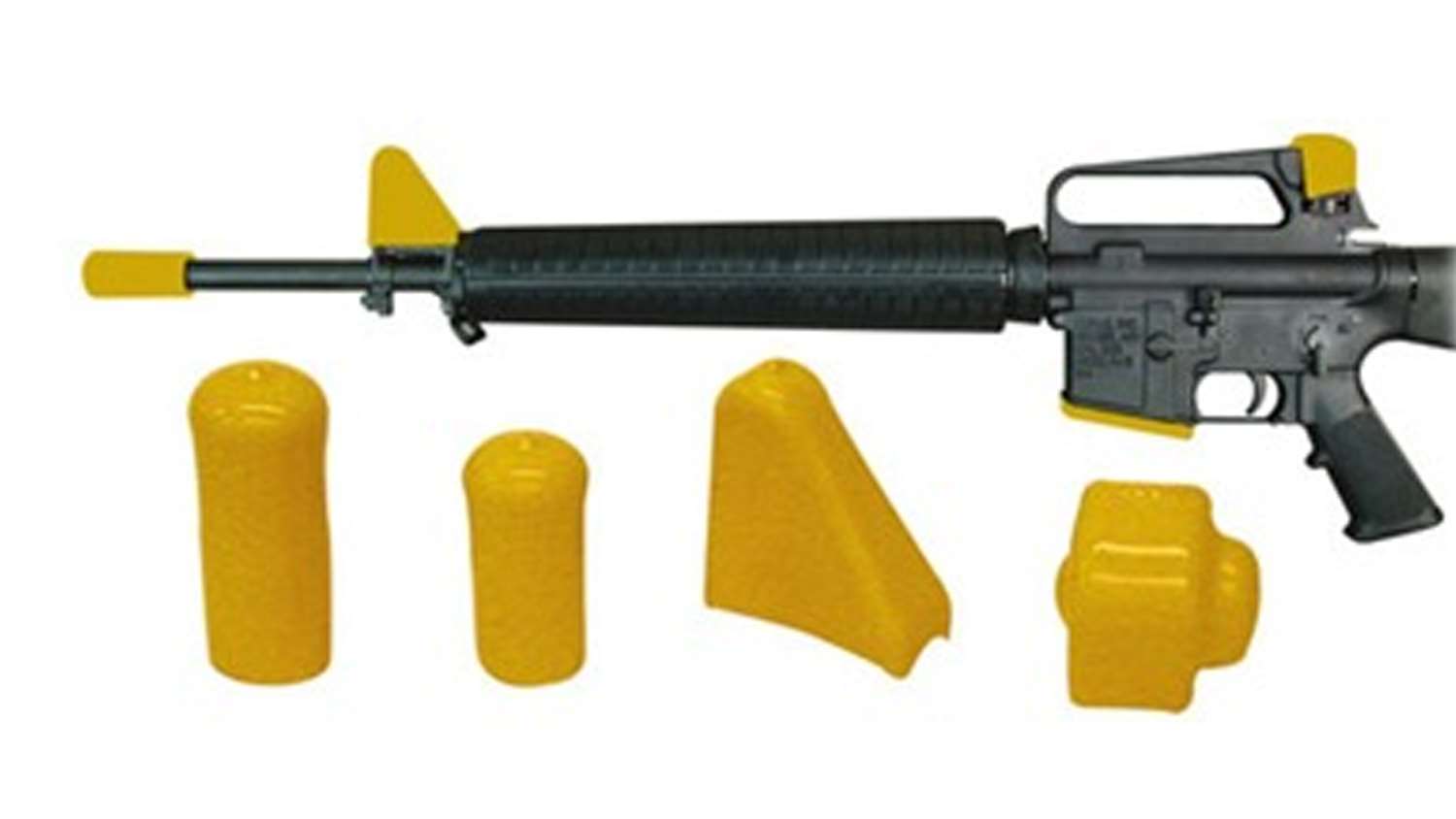
Round or square? I use round; most shooters use square. Round has no hard edge, and the couple of square ones I tried ended up sitting slightly askew. It doesn't increase the width but it fuzzes the edge if the light catches it. My M14 posts were tapered toward the muzzle; there are some AR-15 posts like that as well. This taper prevents the possibility of seeing any of the side of the sight. The main reason I opted for a round post, though, was because they are more readily available in varying widths.
I'm not going to argue with anyone on sights. That's like arguing about flavors. But at least try a front post that's the same perceived width as the 600-yard bullseye, not the 200 or 300. That's the target where alignment is most important, and it's going to take a little more than .052-inch to get the sight top covering it edge to edge.
Problems in the Windage Assembly
The hole on the right for the windage screw can be up to .156-inch, and GI screws are usually .142-inch. John Holliger makes his screws so the boss is .146-inch. Most of the good aftermarket bases out there run about .146- to .147-inch. If the receiver hole is .149-inch or so, he'll drill and tap the hole, thread a bronze bushing into it and then ream the bushing to size.
Problems in the Elevation Assembly
There can be problems in the fit of the elevation post and its hole in the receiver. It can rock from side to side, and movement at the bottom of the elevation post causes the opposite movement at the aperture—it's tipping. The movement comes with turning the elevation wheel: change directions on the wheel and it leaves it in a different position. The receiver hole is .502-inch, and if the post diameter is under .405-inch, he turns a bronze bushing and presses it into the receiver under the elevation wheel. Holliger also adds another detent to the elevation wheel.

































